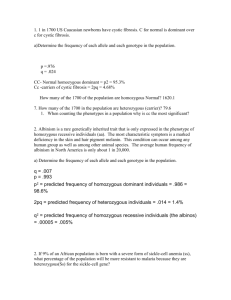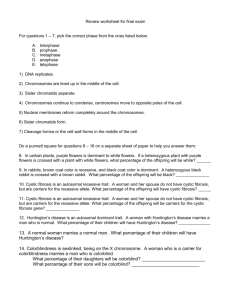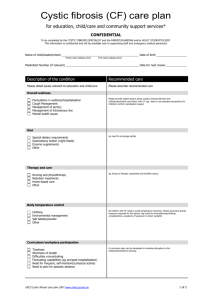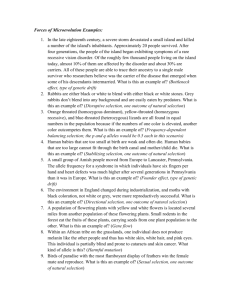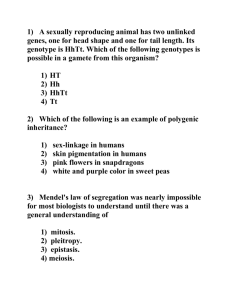Practice Genetics Problems - mvhs
advertisement
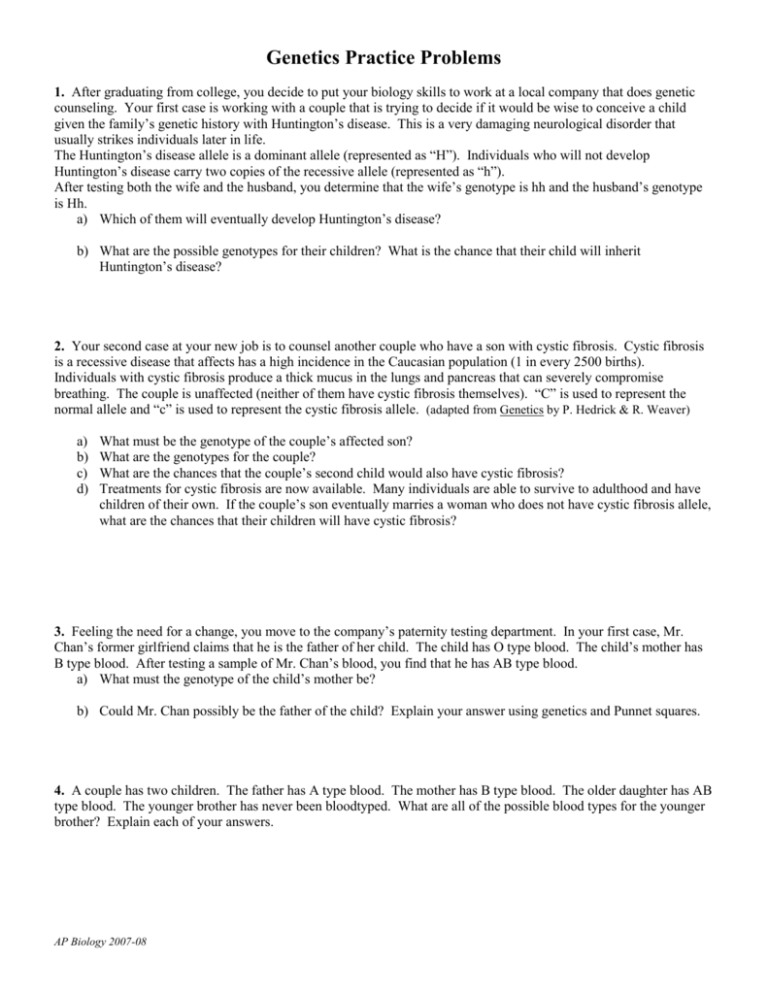
Genetics Practice Problems 1. After graduating from college, you decide to put your biology skills to work at a local company that does genetic counseling. Your first case is working with a couple that is trying to decide if it would be wise to conceive a child given the family’s genetic history with Huntington’s disease. This is a very damaging neurological disorder that usually strikes individuals later in life. The Huntington’s disease allele is a dominant allele (represented as “H”). Individuals who will not develop Huntington’s disease carry two copies of the recessive allele (represented as “h”). After testing both the wife and the husband, you determine that the wife’s genotype is hh and the husband’s genotype is Hh. a) Which of them will eventually develop Huntington’s disease? b) What are the possible genotypes for their children? What is the chance that their child will inherit Huntington’s disease? 2. Your second case at your new job is to counsel another couple who have a son with cystic fibrosis. Cystic fibrosis is a recessive disease that affects has a high incidence in the Caucasian population (1 in every 2500 births). Individuals with cystic fibrosis produce a thick mucus in the lungs and pancreas that can severely compromise breathing. The couple is unaffected (neither of them have cystic fibrosis themselves). “C” is used to represent the normal allele and “c” is used to represent the cystic fibrosis allele. (adapted from Genetics by P. Hedrick & R. Weaver) a) b) c) d) What must be the genotype of the couple’s affected son? What are the genotypes for the couple? What are the chances that the couple’s second child would also have cystic fibrosis? Treatments for cystic fibrosis are now available. Many individuals are able to survive to adulthood and have children of their own. If the couple’s son eventually marries a woman who does not have cystic fibrosis allele, what are the chances that their children will have cystic fibrosis? 3. Feeling the need for a change, you move to the company’s paternity testing department. In your first case, Mr. Chan’s former girlfriend claims that he is the father of her child. The child has O type blood. The child’s mother has B type blood. After testing a sample of Mr. Chan’s blood, you find that he has AB type blood. a) What must the genotype of the child’s mother be? b) Could Mr. Chan possibly be the father of the child? Explain your answer using genetics and Punnet squares. 4. A couple has two children. The father has A type blood. The mother has B type blood. The older daughter has AB type blood. The younger brother has never been bloodtyped. What are all of the possible blood types for the younger brother? Explain each of your answers. AP Biology 2007-08 5. The allele for color-blindness is carried on the X chromosome, making color blindness(a recessive trait)an Xlinked trait. A normal male and a female who is a carrier for color blindness (but is not colorblind herself) have a child. a) What is the % chance that their son will be color blind? b) What is the % chance that their daughter will be color blind? 6. Look at the following pedigree for a sex-linked trait to answer the questions below. KEY: = unaffected male = male with trait = unaffected female = female with trait A B a) b) c) d) Is the allele for this trait found on the X or the Y chromosome? Is this a dominant or a recessive trait? If individual A has children with an unaffected male, what are the chances that her children will have the trait? Individual B marries an unaffected woman. What are the chances that they will have affected children? AP Biology 2007-08

